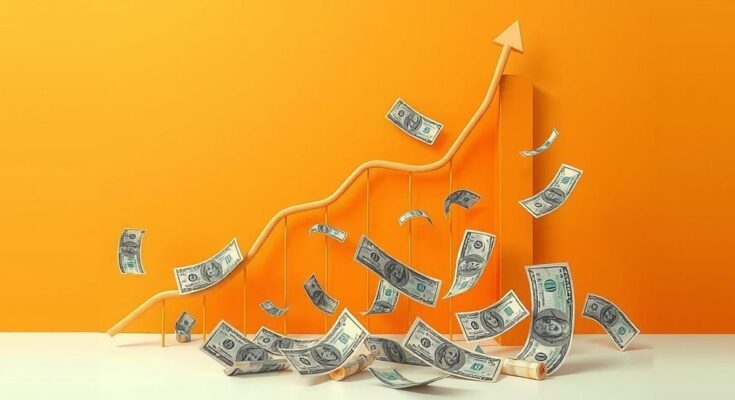Argentina is set to see a rebound in inflation this month, with projections exceeding February’s rates. Despite government assurances of economic progress, spending has significantly dropped. Seasonal factors and currency uncertainties are fueling inflation, which remains a pressing challenge for many Argentine families facing increased living costs.
Argentina is facing a projected inflation rebound this month according to analysts in Buenos Aires. Following the National Institute of Statistics and Census (Inec) report indicating a 2.4% increase in February’s National Consumer Price Index (IPC), expectations suggest March’s inflation could exceed February’s core rate of 2.9%.Despite claims of progress by President Javier Milei’s Libertarian administration, analysts highlight a significant drop in spending levels with mass consumption having fallen by 10.2% last month. Seasonal factors, notably the start of the school year and rising transport costs, are contributing to heightened price pressures, with ongoing currency uncertainties exacerbating inflationary challenges.Over the last 15 months, nationwide consumption has been in decline, with notably fewer purchases of soft drinks, alcoholic beverages, and household goods. February 2025 saw a 9.8% year-on-year contraction, and both supermarket and self-service store sales experienced substantial drops, although the pace of decline has slowed since October 2024. In February, the basic food basket (CBA) witnessed a significant 3.2% increase, the highest in half a year, overshadowing the 2.3% rise in the poverty-line basket. A typical family now requires AR$ 1,057,923 (approximately US$ 881.6 using the unofficial “blue” rate) monthly to avoid poverty, and AR$ 468,108 (roughly US$ 309) to steer clear of indigence. The Indec’s report noted an inflation rise to 2.4% in February, up from 2.2% in January, with a cumulative 66.9% rise over the past year and a year-to-date increase of 4.6%.The largest contributing sectors to inflation included Housing, Water, Electricity, Gas, and Other Fuels at a 3.7% increase, driven by rising housing rent and utilities. Food and Non-Alcoholic Beverages rose by 3.2%, largely due to increased meat prices. Conversely, Household Equipment and Maintenance only rose by 1%, while Clothing and Footwear increased by a mere 0.4%.Regional inflation variations were noted, with Patagonia at 3.2%, Cuyo at 2.7%, Northwest at 2.6%, and Pampas at 2.5%; in contrast, the Greater Buenos Aires region reported a lower figure of 2.2% and Northeast at 1.9%. Buenos Aires City recorded a decrease in inflation to 2.1%, aided by a 4.8% reduction in tourism-related services, although year-on-year inflation there remains high at 79.4%. Additionally, unemployment in Buenos Aires rose by 50% within a year. The Central Bank’s latest report predicts inflation rates of 2.3% for February and 2.2% for March, indicating a potential reversal from previous downward trends.
In summary, Argentina is bracing for an increase in inflation, exacerbated by reduced consumer spending and seasonal pressures. Critical economic indicators reveal that inflation is projected to accelerate in March, while spending remains considerably low. The basic necessities’ rising costs are pushing families closer to the poverty line, highlighting ongoing economic challenges. Overall, the environment increasingly points towards persistent inflationary concerns, challenging the government’s proclamations of economic stability.
Original Source: en.mercopress.com




